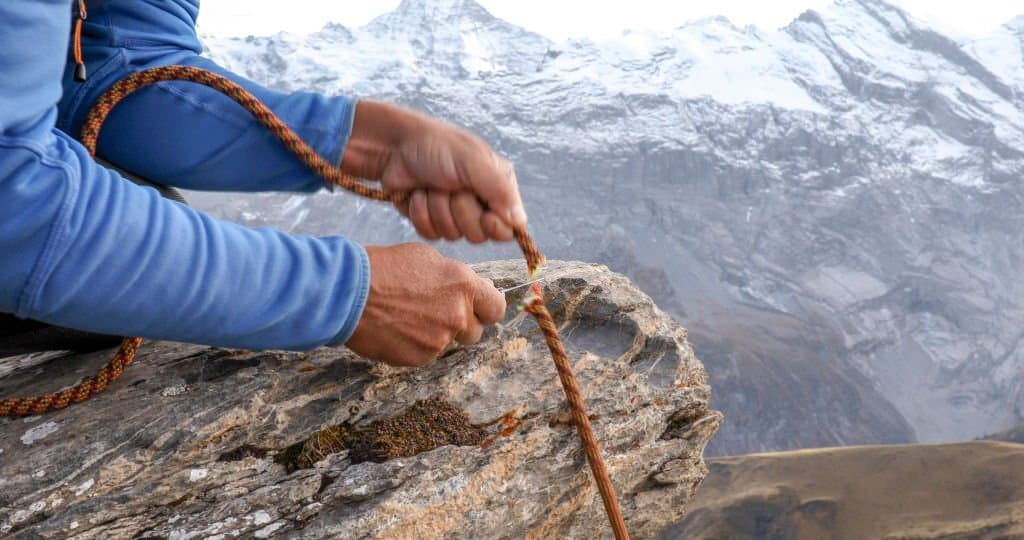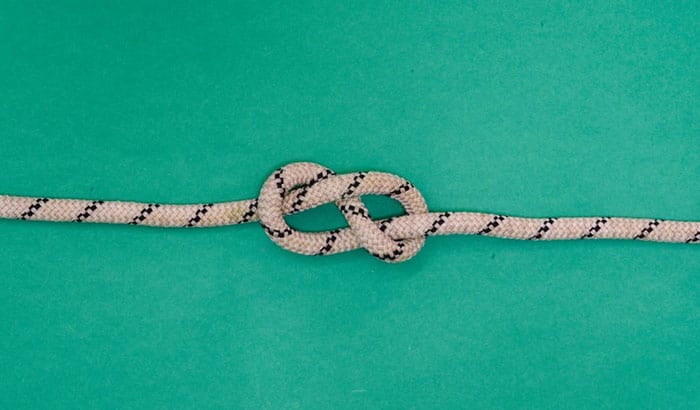A climbing rope is one of the most essential and used equipment in every climbing activity. So it is normal for this rope to feel the effect of wear and tear after an entire season of climbing. The first 15 meters of each side of the rope are the most affected by the constant usage, wear, and friction.
After an entire season of usage, this part of the rope may start to wear out, unravel, or fray, which makes it feel unreliable. But there is actually no need to retire or not use the rope entirely into the next climbing season. You can cut the worn out part and still use the rope. But how to cut climbing rope properly? Please check the step-by-step process below.
How to Cut Climbing Rope
What to Prepare:
- Sharp Knife
- Climbing Tape
- 2 Assistant (To Pull the Rope Tightly)
Step 1: Locating the Damaged Part
The initial step is to identify that part that has been worn out in the climbing rope. As a frequent user of the climbing rope, you should be familiar with the part that has worn out or damaged. This part of the rope will be cut for you to be able to use the rope continuously into the next climbing season.
Keep on checking on the rope parts that feel soft or squishy when you hold them. There are some cases where the sheath of the climbing rope will be torn and show the whole core of the rope.
As mentioned earlier, the damaged or worn part is usually found about 15 feet from both ends of the climbing rope. Once you locate the damaged portion of the climbing rope, you will need to find a part which is about 30 cm from the damaged portion. This part is where you will be cutting the damaged rope.
Step 2: Marking and Taping the Climbing Rope
Once you locate the damaged part and the specific part where you will be cutting the rope, the next step is to mark and tape the spot for your reference. Using the climbing tape, you will need to tape the rope as tight as possible. You can even overlap layers of similar tape to tape your fingers with.
Doing this step will give you a clear reference on the right location to cut and make sure that the coating and the inside portion of the rope will not separate and fray after the cutting process.
Step 3: Tightening the Climbing Rope
Before cutting the rope, you will need to tighten it for you to have an easy cutting process. Tightening the climbing rope apart tightly will make it easier to cut. But how will you tighten it? One way is to use two assistants to pull the rope apart from both ends.
Another way is to use a chair and sit on it while placing the climbing rope under your feet while coming over your knees. This action will result in the climbing rope being under tension, specifically the part that will be cut.
Step 4: The Cutting Process
After locating the damaged part, taping the exact location of the cut, and holding it tightly, it is now time to cut the rope. Get the sharp knife and start cutting to the exact location that you have indicated when taping the climbing rope.
You can heat the knife using an air gun or your kitchen burner to make the knife more effective. You can heat the knife before using it to cut the rope. The knife will be more effective if you will try to use this method.
Step 5: Melting the End of the Climbing Rope
After cutting the climbing rope, you will need to melt the end part where the rope is cut. This step will make the individual threads of the climbing rope be connected together to prevent fraying on the end part of the rope.
You can heat the end of the rope slowly using a lighter but make sure that the strands of the rope will melt together. Let it dry until the melting point has completely dried up. Repeat the similar process on the other side of the rope.
Helpful Tips
The table below will show the ideal usage of a climbing rope depending on the frequency of its usage. In general, an unused rope must be retired after 10 years. But for other frequencies of usage, the table below will guide you:
| Frequency of Usage | Longevity/Lifespan |
| Once a Month | Retire After 5 Years |
| Twice a Month | Retire After 3 Years |
| More than Twice a Month | Retire After 1 Year |
- Since you will be cutting your rope, it will be better for you to choose a longer climbing rope when buying a new one. This step will allow you to have an extra length if you decide to cut the damaged part after a full climbing season
- There are some climbing ropes that come with a marking in the middle part of the rope. If you decide to cut a portion of the rope, you must also update the marking as your guide during the climbing activity
Conclusion
Learning how to cut climbing rope is easy if you are familiar with doing it. This skill will come in handy if you start doing any climbing activity and the need to cut a damaged part of the climbing rope is essential. Cutting the rope will also allow you to reuse the rope again and not throw it early or retire it.


